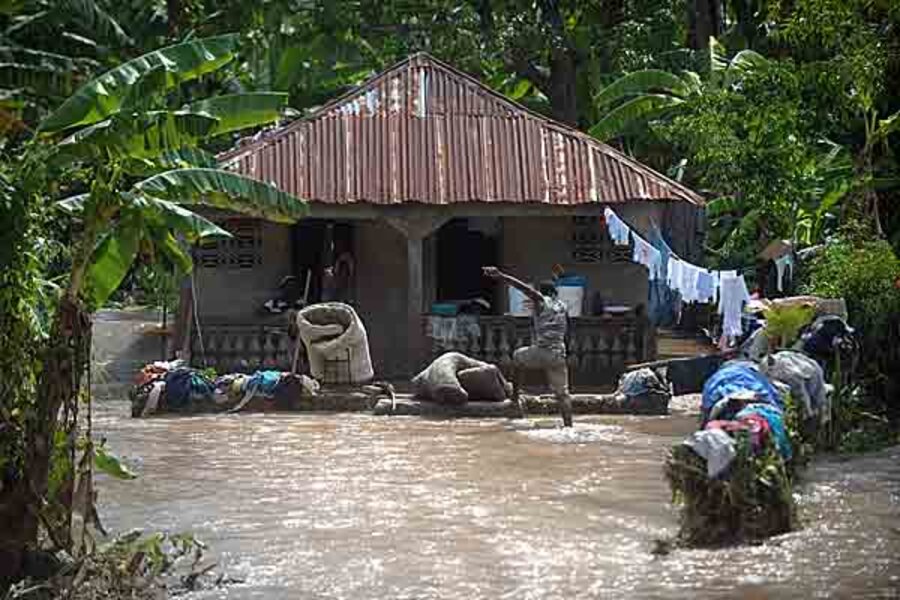As world watches Chile earthquake, deadly floods hit quake-rocked Haiti
Loading...
| Port-au-Prince, Haiti
Solange Xavier’s house in Port-au-Prince disintegrated like a sand castle when the 7.0 earthquake rocked Haiti on Jan. 12. The quake also killed her son.
Ms. Xavier spent last weekend in Les Cayes, some 95 miles southeast of the capital, taking a much needed respite. But on the bus ride home torrential rains nearly carried her away. Blind in one eye, Xavier watched in horror as livestock, suitcases, and dishes floated by. Officials reported that at least a quarter of the town took on rivers of runoff water a meter and a half deep, damaging homes and spreading panic, particularly among those earthquake victims camped out in yards and open spaces. At least eight people were killed.
“If the rains could do this now – before the real rainy season – what is going to happen to those of us living in tents in Port-au-Prince? Or people sleeping on the street?” she asked. “We are all going to be dead.”
That's the issue weighing on the minds of most Haitians – and the thousands of aid workers from around the world who are helping the devastated Caribbean nation.
For weeks after the quake, Haitian authorities and international aid groups were grateful for the lack of rain as they scrambled to prepare for the torrential downpours common during Haiti's rainy season, which usually begins in April. The International Federation of Red Cross and Red Crescent Societies (IFRC), which is coordinating shelter response, estimates that nearly 40 percent of the 1.3 earthquake victims now have some form of shelter. But hundreds of thousands more are living in the open or under flimsy sheets tied to thin strips of wood. Early rains pelted them, caused mudslides and increased concern that time is running out before the rainy season.
“Some in the international community failed to understand just how crucial securing temporary shelter and sanitation systems would be, given the imminent arrival of the rainy season,” said William G. O’Neill, director of the Conflict Prevention and Peace Forum in New York after a recent visit to Haiti. “Someone should take a hard look at what went wrong in the humanitarian planning system.”
UN works on 'decongestion'
The United Nations has identified 21 of the 415 spontaneous settlements throughout Port-au-Prince as a priority for "decongestion" but that still leaves 350,000 people unaccounted for. The new government plan, to relocate people back to their neighborhoods as opposed to establishing large camps outside the capital, has been criticized due to concerns about safety. Partially collapsed homes sit next to destroyed ones; chunks of cement and twisted rebar are perched precariously close to makeshift homes in the middle of the street. Aftershocks are as frequent as the sound of cement being dumped into pickup trucks
The first of the new government settlements, a 96-family tent camp in front of the collapsed cathedral, has relieved some of the stress for those who were among the 60,000 living on the Champs de Mars square in front of the palace.
New residents, like 26-year old Caitlin Maurice, also received rice, beans, and cooking oil. “The government, finally, is starting to do something,” said the mother of three. “But it’s hardly enough. We still don’t have toilets.”
The Haitian Red Cross Society has 5,000 volunteers working on providing water and sanitation. The IRFC plans to build at least 20,000 transitional homes and the government is exploring alternative housing options. Consultants are urging the government to use its executive power to take control of privately owned land for these settlements. If not, they worry, people will stay where they are or return to houses that weren’t safe in the first place.
"When it rains [hard], these [tents and tarps] will not provide much protection, and we all know that,” said IRFC spokesman Alex Wynter. "The real issue in Haiti is land, land, and again land.”





